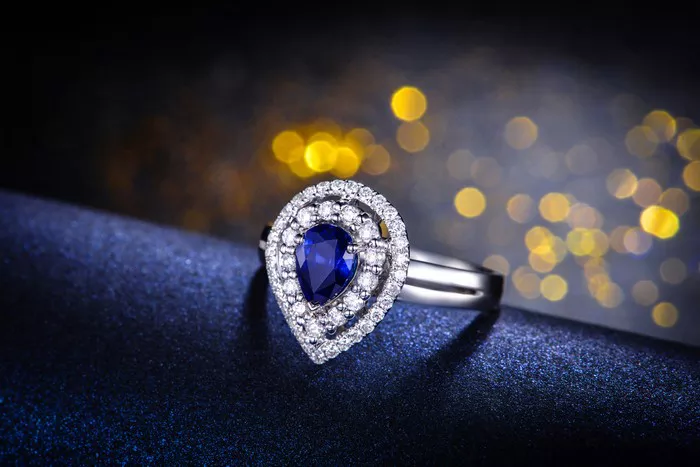Princess Diana’s jewelry collection is one of the most iconic in royal history. Among the most stunning pieces is her beautiful aquamarine ring, a symbol of grace and elegance. This ring not only has historical value but also has garnered attention due to its unique design and the brilliant aquamarine gemstone.
In this article, we’ll delve into the estimated worth of Princess Diana’s aquamarine ring. We will explore the factors that contribute to its value, including the gemstone quality, the craftsmanship, and its historical significance.
The History of Princess Diana’s Aquamarine Ring
Princess Diana first wore the aquamarine ring in 1997, after her divorce from Prince Charles. The ring was custom-made for her, and she paired it with a matching aquamarine bracelet. Diana’s aquamarine ring became a symbol of her new independence, and she notably wore it during a visit to Australia.
This ring, designed by Asprey, features a large, emerald-cut aquamarine surrounded by smaller diamonds. The gemstone’s light blue color made it a perfect complement to Diana’s elegant style. Over the years, it has become one of the most famous rings in royal history.
See Also: How to Revive Dull Aquamarine Gemstones Effectively
Factors That Influence the Value of the Aquamarine Ring
Several factors determine how much Princess Diana’s aquamarine ring is worth. Let’s break these down:
1. The Quality of the Aquamarine Gemstone
Aquamarine is a member of the beryl family, which also includes emeralds. The quality of the aquamarine in Diana’s ring is a major factor in its value. Several characteristics influence the value of an aquamarine:
Color: The most valuable aquamarines are a deep, clear blue. Diana’s aquamarine, known for its striking color, is likely at the higher end of the value scale. The color saturation is one of the key aspects contributing to its worth.
Clarity: Aquamarines are generally eye-clean, meaning they have no visible inclusions. Diana’s aquamarine is no exception, with its clarity adding to its allure. A gemstone with fewer inclusions is considered more valuable.
Cut: The cut of a gemstone affects how it reflects light. Diana’s aquamarine is emerald-cut, a style that enhances the stone’s brilliance and clarity. The precision of the cut adds significant value to the ring.
Size: Larger aquamarines are rarer and thus more expensive. Diana’s aquamarine is an impressive size, estimated to be around 30 carats, making it a standout feature of the ring.
2. The Value of the Diamonds
The aquamarine is surrounded by smaller diamonds, which also contribute to the ring’s value. Diamonds are priced based on the famous “4 Cs” — carat, cut, color, and clarity. The diamonds on Diana’s ring are estimated to be of high quality, which increases the overall value.
3. The Craftsmanship of the Ring
The craftsmanship of a ring affects its worth. Diana’s aquamarine ring was made by Asprey, a renowned British jeweler known for their high-quality work. The meticulous design and attention to detail in this ring make it a masterpiece of jewelry craftsmanship.
4. Historical Significance
One of the biggest factors in determining the value of this ring is its historical significance. Princess Diana’s connection to the ring makes it priceless to collectors and fans of royal memorabilia. The fact that she wore it during key moments in her life adds emotional and historical value. Additionally, this ring was passed down to Meghan Markle, the Duchess of Sussex, who wore it at her wedding reception in 2018. This has only increased the public interest and value of the ring.
Estimated Value of Diana’s Aquamarine Ring
Given all these factors — the high-quality aquamarine, the diamonds, the craftsmanship, and its historical importance — experts estimate that Princess Diana’s aquamarine ring could be worth between $250,000 and $500,000. Some collectors may be willing to pay even more due to its royal provenance.
The size and quality of the aquamarine itself could make this ring worth over $100,000 on its own. However, its value skyrockets due to its association with Princess Diana and now Meghan Markle.
Why Is Aquamarine So Valuable?
Aquamarine has been a favorite gemstone for centuries due to its tranquil blue color, symbolizing the ocean. It is believed to have calming properties and is often associated with courage and communication.
Rarity and Demand
While aquamarine is found in several locations worldwide, high-quality stones, especially in larger sizes like Diana’s, are relatively rare. This scarcity makes it more valuable. Demand for aquamarine has also increased in recent years, thanks in part to high-profile appearances such as Meghan Markle’s use of the ring.
Popularity Among Royals
Aquamarine has always been popular among royalty. Queen Elizabeth II also has a collection of aquamarine jewelry, including a famous Brazilian aquamarine tiara. The royal connection further boosts the demand for this gemstone.
How Aquamarine Compares to Other Royal Jewelry
Diana’s aquamarine ring, while valuable, is not the most expensive piece of royal jewelry. Some of the most valuable royal jewels include the Crown Jewels of the United Kingdom, which are considered priceless, and other personal pieces belonging to various members of the royal family, like the Cambridge Lover’s Knot Tiara.
However, when it comes to sentimental and historical value, Diana’s aquamarine ring holds a special place in people’s hearts. Its elegance, combined with its symbolism of independence and grace, make it one of the most treasured pieces of jewelry.
Conclusion
While experts estimate that Princess Diana’s aquamarine ring is worth between $250,000 and $500,000, its true value goes beyond its monetary worth. The ring represents a legacy of elegance, strength, and independence. Its connection to both Princess Diana and Meghan Markle ensures that it will continue to capture the public’s imagination for years to come.
Aquamarine, with its serene beauty and royal connection, will always hold a special place in the world of fine jewelry. And this particular aquamarine ring, with its rich history, will remain one of the most iconic pieces associated with the British royal family.


